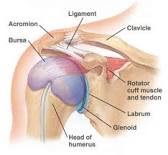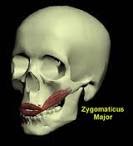Ⅱ Optic nerve
Ⅲ Oculomotor nerve
Ⅳ Trochlear nerve
Ⅴ Trigeminal nerve
Ⅵ Abducent nerve
Ⅶ Facial nerve
Ⅷ Vestibulocochlear nerve
Ⅸ Glossopharyngeal nerve
Ⅹ Vagus nerve
Ⅺ Accessory nerve
Ⅻ Hypoglossal nerve
These are classified into sensory, motor and mixed nerves according to their functions.
Sensory cranial nerves: These nerves contain only afferent (sensory) fibers.
They are given below.
Ⅰ Olfactory nerve
Ⅱ Optic nerve
Ⅷ Vestibulocochlear nerve
Motor cranial nerves: These nerves contain only efferent (motor) fibers.
They are given below.
Ⅲ Oculomotor nerve
Ⅳ Trochlear nerve
Ⅵ Abducent nerve
Ⅺ Accessory nerve
Ⅻ Hypoglossal nerve
Mixed nerves: These nerves contain both sensory and motor fibers.
They are given below.
Ⅴ Trigeminal nerve,
Ⅶ Facial nerve,
Ⅸ Glossopharyngeal nerve
Ⅹ Vagus nerve
- Olfactory nerve (first cranial)
- Optic nerve (second cranial)
- Oculomotor nerve (third cranial)
 It arises from the anterior surface of the med brain in between two cerebral peduncles. From the posterior cranial fossa it enters the lateral aspect of the petrous part of the temporal bone. Here it lies in a cave called cavernus sinus. From the middle cranial fossa it passes into the orbit through the superior orbital fissure. After emerging from the superior orbital fissure it divides into upper and lower branches.
It arises from the anterior surface of the med brain in between two cerebral peduncles. From the posterior cranial fossa it enters the lateral aspect of the petrous part of the temporal bone. Here it lies in a cave called cavernus sinus. From the middle cranial fossa it passes into the orbit through the superior orbital fissure. After emerging from the superior orbital fissure it divides into upper and lower branches.Upper branch innervates the superior rectus muscle and levator palpebrii superioris muscle while the lower branch innervates inferior rectus, medial rectus and inferior oblique muscles. Along the lower fibers the parasympathetic nerve fibers also enter which innervates the ciliary muscle (causing accommodation of lens) and sphincter papillae muscles (causing constriction of pupils).
- Trochlear nerve (fourth cranial)
- Trigeminal nerve (fifth cranial)
i. Ophthalmic nerve
ii. Maxillary nerve
iii. Mandibular nerve
Ophthalmic nerve (V1)
It passes from the middle cranial fossa through superior orbital fissure. Below the roof of the orbit it gives off branches shown in the following figure.
Maxillary nerve (V2)
It arises from the trigeminal ganglion passes from the middle cranial fossa into infra temporal fossa through the foramen rotundum. In the infra temporal fossa it divides into two branches; upper and lower branches.
Infra orbital nerve from the upper branch passes through a tunnel called infra orbital groove in the floor of the orbit. It appears below the lower margin of the orbit and divides into three cutaneous branches:
Palpebral supplying the lower eyelid
Nasal supplying lateral part of nose
Labial supplying upper lips
Anterior superior alveolar nerve of the lower branch also passes through the infra orbital groove along the infra orbital nerve and makes a turn posteriorly after emerging from the infra orbital foramen. Posteriorly it joins the posterior superior alveolar nerve which appears here after passing through bony tunnels in the maxilla. They form a loop like structure from which gives the superior dental and gingival nerves innervating the upper teeth and upper gums. Other branches of lower part of the maxillary nerve include palatine nerves (greater and lesser palatine nerves) which innervate mucosa of the hard, soft palate and nasal mucosa. Nasopalatine nerve innervates the nasal septum. Zygomatic nerve is also a branch of lower part of maxillary nerve which divides into frontal and temporal nerves innervating the skin over the cheek bones.
Mandibular nerve (V3)
It arises from the trigeminal ganglion in the cavernus sinus of the middle cranial fossa. From here it passes downwards and enters the infra temporal fossa through the foramen ovale. Here it gives sensory and motor branches. Motor branches innervate the muscles of mastication, these are masseter, temporalis, medial and lateral pterygoid muscles.
Small motor branches innervate the tensor tympani and tensor veli palatine. Sensory branches are buccal nerve which innervates the cheeks (lateral part). Auricotemporal nerve passes upwards behind the neck of the mandible and innervates the skin on the lateral side of the forehead. Two main terminal branches of the mandibular nerve are the inferior alveolar nerve and lingual nerve.
Inferior alveolar is the posterior branch which passes through the mandibular foramen in the mandible then continues in the mandible through the mandibular canal. While passing through the mandibular canal it gives off inferior dental and gingival nerves which innervate the lower teeth and lower gums. The terminal part of the inferior alveolar nerve emerges from the mandible through the mental foramen. As it emerges from the mental foramen it is called mental nerve which innervates the skin of the chin on the corresponding ipsilateral area. Before entering the mandibular foramen a small nerve called myohoid nerve separate from it and innervates the myolohoid muscle and anterior belly of digastrics muscle.
Lingual nerve passes in front of inferior alveolar nerve and passes downward between the lateral surface of medial pterygoid muscle and medial surface of the mandible. At its origin it receives branches from seventh cranial nerve (facial nerve) called chorda tympani. Chorda tympani and lingual nerve passes downward jointly and innervates the anterior two third of the tongue responsible for taste (chorda tympani) and general sensation from anterior two third of the tongue (lingual nerve).
- Abducent nerve (sixth cranial)





 7:47 AM
7:47 AM
 Aftab Ahmad Khan Yousafzai
Aftab Ahmad Khan Yousafzai













































